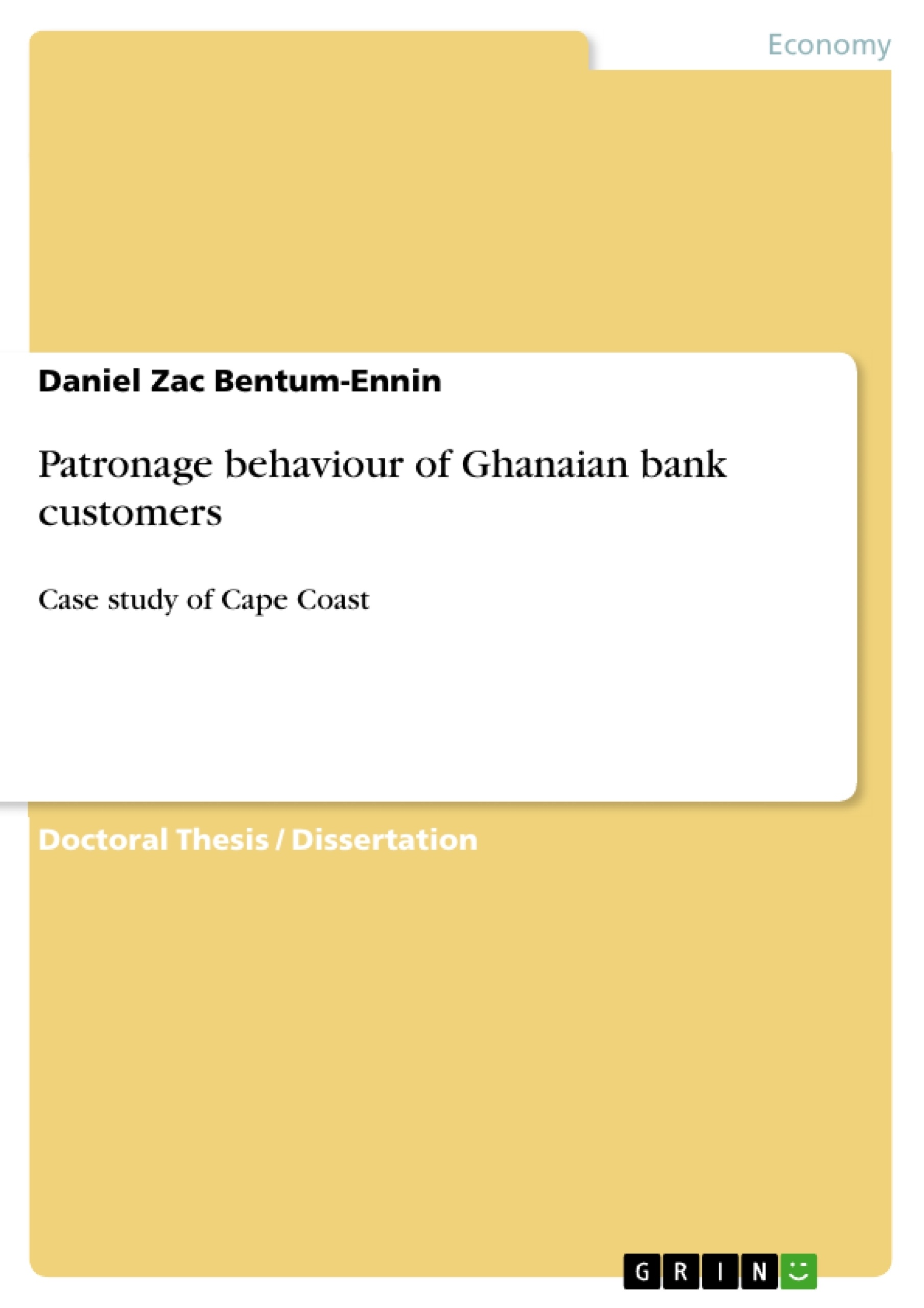The aim of this dissertation is to help bank executives to develop and deliver efficient quality services to satisfy the needs of existing customers as well as to attract large number of customers.
It is hoped it will further enable the management of banks to stimulate and understand more fully customers since customers’ attitude can’t be controlled. It could contribute to discussion amongst the banking fraternity regarding issues surrounding customer preferences in banking services.
As a researcher who is interested in working in a bank, significant benefits can be gained from knowing how the operations of a bank can be made more efficient and thus continue to attract and maintain customers.
Inhaltsverzeichnis (Table of Contents)
- CHAPTER ONE
- INTRODUCTION
- Country profile
- History of Banking in Ghana
- Current Banking system in Ghana
Zielsetzung und Themenschwerpunkte (Objectives and Key Themes)
This text aims to explore the patronage behavior of Ghanaian bank customers in Cape Coast. It examines the historical context of banking in Ghana, the current banking landscape, and the factors influencing customer choices and loyalty. The text delves into the dynamics of customer relationship management in the Ghanaian banking industry, particularly in light of emerging trends and challenges.
- The history and evolution of banking in Ghana
- The current banking system in Ghana, including its structure and key players
- Factors influencing customer loyalty and patronage behavior in Ghanaian banks
- The role of interest rates and customer service in shaping customer preferences
- The challenges and opportunities facing the Ghanaian banking industry
Zusammenfassung der Kapitel (Chapter Summaries)
Chapter One introduces the context of the study by providing an overview of Ghana's banking system. It explores the historical development of banking in Ghana, highlighting key milestones and the evolution of banking services. The chapter also delves into the current banking landscape, outlining the types of banks operating in Ghana, their services, and the regulatory framework governing the industry. The chapter also discusses the factors influencing customer choices and loyalty in the Ghanaian banking sector, including interest rates, service quality, and the emergence of new banking models.
Schlüsselwörter (Keywords)
This text focuses on key concepts such as Ghanaian banking, customer patronage, banking system, customer loyalty, interest rates, service quality, banking industry trends, and relationship banking. It explores the impact of these factors on the Ghanaian banking landscape, particularly in the context of Cape Coast.
- Quote paper
- Daniel Zac Bentum-Ennin (Author), 2012, Patronage behaviour of Ghanaian bank customers, Munich, GRIN Verlag, https://www.grin.com/document/281765



